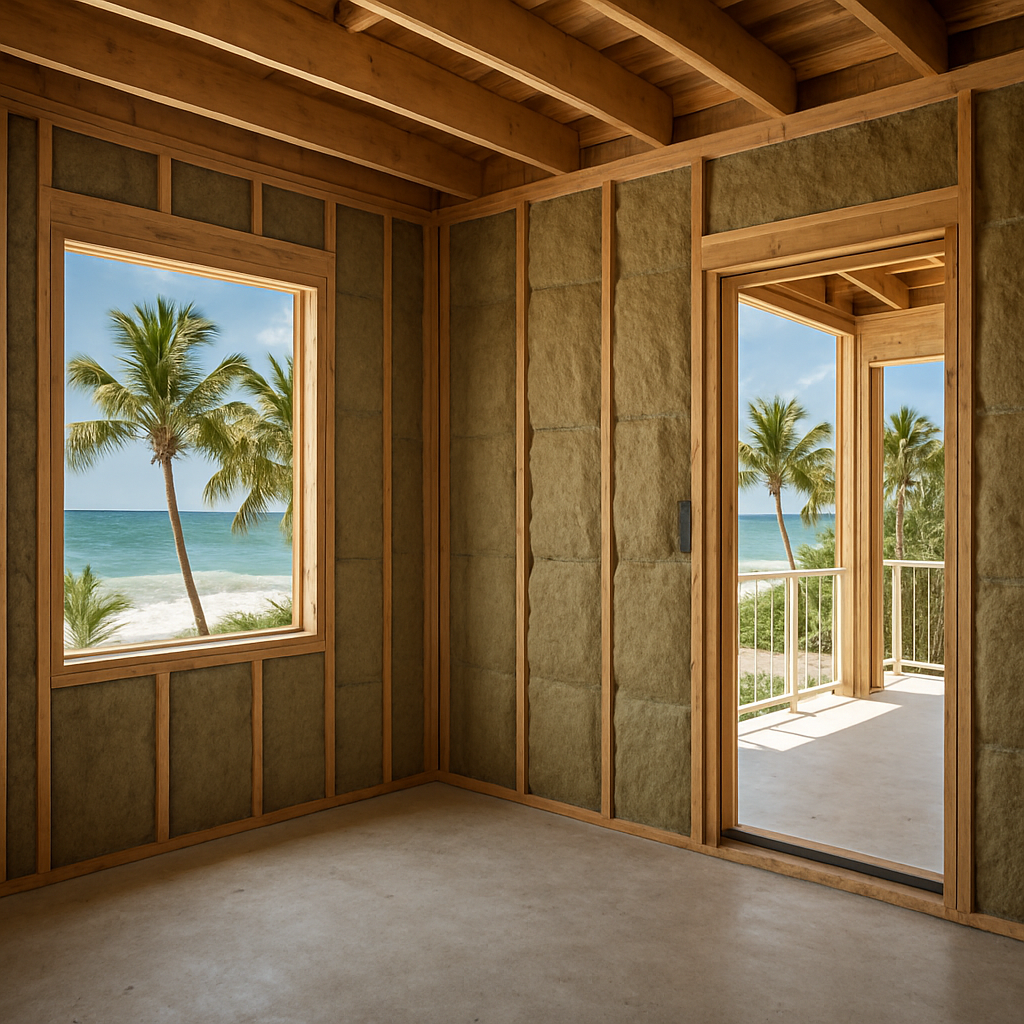
Beyond the Screen: A Builder's Technical Guide to Soundproofing a Luxury Home Theater
A luxury home theater is more than just a big screen and expensive speakers; it's a fully immersive experience. For the luxury builder, the success of that experience hinges on one critical, often misunderstood element: acoustic isolation. A theater that leaks sound into the rest of the home is a fundamental failure, leading to client dissatisfaction and undermining the perception of quality.
This technical guide provides a clear, actionable framework for achieving elite-level soundproofing in a home theater. We will focus on the most effective material for this application: high-density mineral wool insulation.
This article is part of our comprehensive series on high-performance building. For a broader look at how to engineer a complete insulation system for a luxury home, we recommend reading our main guide, The High-Performance Hybrid Model: Engineering Luxury Homes with Spray Foam and Mineral Wool.
The Two Pillars of Home Theater Acoustics
Effective soundproofing is a two-part equation:
- Sound Absorption (NRC): This is the reduction of sound within the theater. It tames echoes and reverberation, leading to clearer, more precise audio.
- Sound Blocking (STC): This is the prevention of sound leaving the theater. This is the key to acoustic isolation and is our primary focus.
While acoustic panels and bass traps are essential for absorption, the foundation of sound blocking is built within the walls and ceiling.
Why Mineral Wool is the Non-Negotiable Choice for Sound Blocking
To block the powerful, low-frequency sound waves produced by a modern home theater, you need mass and density. This is where standard insulation fails and mineral wool excels.
- High Density: Mineral wool batts are significantly denser than fiberglass. This sheer mass provides a formidable barrier to sound energy.
- Non-Directional Fiber Structure: The chaotic orientation of the fibers is incredibly effective at trapping and dissipating sound waves, converting them into tiny amounts of heat.
The Assembly is Key: Building a High-STC Wall
Simply placing mineral wool in a standard wall cavity is not enough. To achieve a truly soundproof environment (STC 55+), you must engineer the entire wall assembly.
The Gold Standard Assembly:
- Decoupled Framing: Construct a double-stud wall or use resilient channels on a single-stud wall. This creates a physical separation that prevents vibrations from transferring through the framing.
- High-Density Mineral Wool: Fill the entire wall cavity with acoustic-focused mineral wool batts (e.g., Rockwool Safe'n'Sound®). Do not compress the batts, as this can reduce their effectiveness.
- Mass-Loaded Vinyl (MLV): For elite performance, add a layer of MLV to one side of the framing. This thin, heavy vinyl acts as an additional sound barrier.
- Double Layer of 5/8" Drywall: Mass is critical. Use two layers of 5/8" drywall on both sides of the wall.
- Acoustic Sealant: Seal every single gap—around outlets, at the floor and ceiling lines, and between drywall sheets—with a high-quality, non-hardening acoustic sealant. A 1% gap in your assembly can reduce its STC rating by up to 50%.
Don't Forget the Ceiling and Floor
Sound will always find the weakest point. The ceiling and floor must be treated with the same rigor as the walls.
- Ceiling: Use the same decoupled, mineral wool-filled, double-drywall assembly for the ceiling.
- Floor: If there is a room above the theater, the floor-ceiling assembly must be insulated with mineral wool to block airborne noise. For impact noise (footfalls), a floating floor system on top of a rubber underlayment is the best solution.
Conclusion: From Builder to Experience Engineer
By implementing these strategies, you are no longer just building a room; you are engineering a perfect acoustic environment. This level of technical expertise is a powerful differentiator in the luxury market. It demonstrates a commitment to quality that goes far beyond the visible finishes and creates a truly immersive experience that your clients will value for years to come.
.png?width=250&height=177&name=Untitled%20(1).png)

